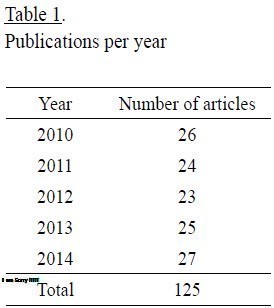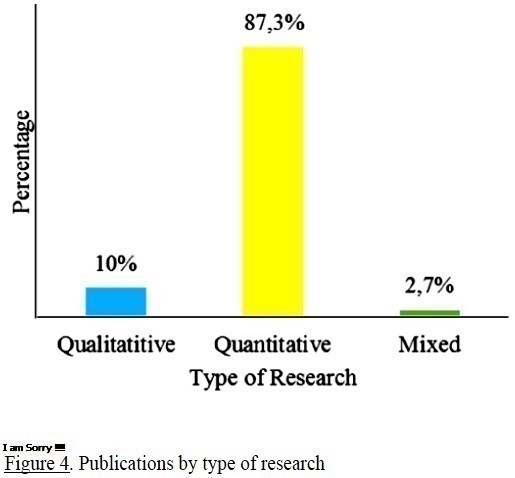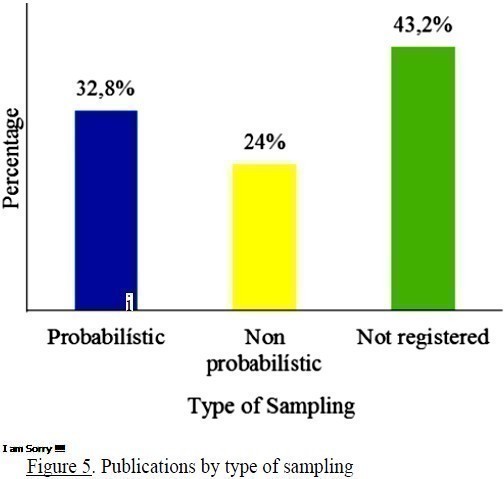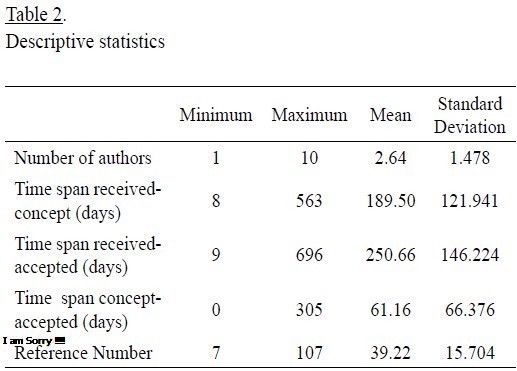Services on Demand
Journal
Article
Indicators
-
 Cited by SciELO
Cited by SciELO -
 Access statistics
Access statistics
Related links
-
 Cited by Google
Cited by Google -
 Similars in
SciELO
Similars in
SciELO -
 Similars in Google
Similars in Google
Share
Acta Colombiana de Psicología
Print version ISSN 0123-9155
Act.Colom.Psicol. vol.19 no.2 Bogotá July/Dec. 2016
https://doi.org/10.14718/ACP.2016.19.2.12
ARTÍCULO
10.14718/ACP.2016.19.2.12
LA PRODUCCIÓN CIENTÍFICA DE ACTA COLOMBIANA DE PSICOLOGÍA: ANÁLISIS DESCRIPTIVO DEL PERÍODO 2010-2014
SCIENTIFIC PRODUCTION OF COLOMBIAN ACT OF PSYCHOLOGY: DESCRIPTIVE ANALYSIS OF THE PERIOD 2010 -2014
A PRODUÇÃO CIENTÍFICA DA ACTA COLOMBIANA DE PSICOLOGÍA: ANÁLISE DESCRITIVA DO PERÍODO 2010-2014
Ernesto L. Ravelo C.*, Susana Mejía, Martha E. González E.
Universidad Católica de Colombia
* Producto de investigación asociado al proyecto de Bibliometría de las Publicaciones científicas seriadas en la Facultad de Psicología. revistaacta@ucatolica.edu.co
Referencia: Ravelo Contreras, E. L., Mejía, S. & González, M. E. (2016). La producción científica de acta colombiana de psicología: análisis descriptivo del período 2010-2014. Acta Colombiana de Psicología, 19(2), 298-314. doi: 10.14718/ACP.2016.19.2.12
Recibido, abril 20/2016
Concepto evaluación, junio 11/2016
Aceptado, junio 12/2016
Resumen
Una de las estrategias para la elaboración de los planes de acción o mejoramiento de las publicaciones científicas parte de la mirada retrospectiva o de estudios de caracterización con respecto a la evolución de las mismas. Para ello se tienen en cuenta indicadores que exigen las bases e índices de datos, los cuales permiten evaluar la calidad científica y editorial, la visibilidad, la periodicidad o estabilidad, así como el impacto. En este sentido, el presente artículo tiene como objetivo realizar un análisis descriptivo de los artículos publicados en la Revista Acta Colombiana de Psicología entre los años 2010 y 2014. Se identificaron las variables a tener en cuenta para este análisis: variables categóricas y variables de tipo cuantitativo. El procesamiento y análisis de datos se realizó mediante el paquete IBM SPSS Statistics versión 23; se analizó cada una de las variables categóricas por medio de frecuencias y porcentajes, y las variables cuantitativas aplicando estadísticos descriptivos. Posteriormente se realizaron los cruces entre algunas variables, tanto categóricas como cuantitativas, mediante el uso de frecuencias, porcentajes, medidas descriptivas y algunos gráficos. Se resalta la información relacionada con el número de artículos publicados por año, procedencia de los artículos, tiempos entre la recepción y aceptación de los mismos, porcentajes de idioma de los artículos, tipo de investigaciones de los cuales se derivan los artículos, y tipo de análisis estadístico utilizado, entre otros.
Palabras clave: producción científica, bibliometría, coautorías, revistas, Psicología.
Abstract
One of the strategies for developing action plans or improving scientific publications originates from a retrospective view or characterization studies, regarding the evolution of such written productions. In order to achieve this, indicators that require databases and indexes are considered. They allow evaluating scientific quality, editorial quality, visibility, periodicity or stability and impact. In this sense, this article aims to make a descriptive analysis of articles published in the “Acta Colombiana de Psicología” (Colombian Act of Psychology) Journal between 2010 and 2014. The variables to be considered for this analysis were identified: categorical and quantitative variables. Processing and data analysis was performed using SPSS Statistics IBM package version 23. Each of the categorical variables was analyzed by frequencies and percentages, and quantitative variables using descriptive statistics. Later, crosses between some variables, both categorical and quantitative, were performed using frequencies, percentages, descriptive measures, and some graphics. Information related to the number of articles published per year was highlighted, as well as origin of the articles, time span between receipt and acceptance, language percentages of the articles, type of research from which articles are derived, and the type of statistical analysis used, among others.
Key words: scientific, bibliometrics, co-authorship, journals, Psychology.
Resumo
Uma das estratégias para a elaboração dos planos de ação ou melhoramento das publicações científicas parte do olhar retrospectivo ou dos estudos da caracterização a respeito da evolução destas. Para isso, consideram-se os indicadores que exigem as bases e os índices de dados, os quais permitem avaliar a qualidade científica, a qualidade editorial, a visibilidade, a periodicidade ou a estabilidade bem como o impacto. Nesse sentido, o presente artigo tem como objetivo realizar uma análise descritiva dos artigos publicados na revista Acta Colombiana de Psicología entre 2010 e 2014. Identificaram-se as variáveis a considerar para esta análise: variáveis categóricas e variáveis de tipo quantitativo. O processamento e a análise de dados foi realizada mediante o IBM SPSS Statistics versão 23; foi analisada cada uma das variáveis categóricas por meio de frequências e porcentagens, e as variáveis quantitativas aplicando estatísticos descritivos. Em seguida, foram realizados os cruzamentos entre algumas variáveis, tanto categóricas quanto quantitativas, mediante o uso de frequências, porcentagens, medidas descritivas e alguns gráficos. Ressalta-se a informação relacionada com o número de artigos publicados por ano, a procedência dos artigos, o tempo entre a recepção e a aceitação deles, as porcentagens de idioma dos artigos, os tipos de pesquisa das quais se derivam os artigos e o tipo de análise estatística utilizada, entre outros.
Palavras-chave: produção científica, bibliometria, coautoria, revistas, Psicologia.
INTRODUCTION
Serial scientific publications have become the means of choice that allows the dissemination of science to the use of knowledge (Vessuri, 1995; Patalano, 2005). Institutional visibility and dissemination of knowledge from the scientific literature are of increasing importance in the world of science and academia (Ravelo, 2007). According to Sanchez Lopez and Vidal Vasquez (2014), “Scientific journals represent a link in the communication process and dissemination of scientific productions of each academic, scientific and professional field. They validate, certify knowledge and communicate to the whole scientific society a new advancement and/or contribution in their specific field so that they can acknowledge, reject or accept it” (p. 2).
In the same way, it is of great importance to carry out descriptive studies, bibliometrics, and analysis of scientific serials, in order to characterize them. For instance, in psychology there have been studies conducted by Fava and Montonary, (1997); Fava, Ottolini and Sonino, (2001); Rahman and Fukui (2000); Rivera-Garzon (2008). In Colombia such type of analysis have been carried out by the following authors: Avila-Toscano, Marenco-Escudero and Madariaga, (2014); Puche-Navarro and Ossa, (2012); Lopez Lopez and Calvache (1998); Jaraba-Barrios, Guerrero-Castro, Gomez-Lopez-Morales and Lopez (2011). Taking into account their evolution, in Latin America there has been an improvement in the production of journals in terms of their scientific and editorial high quality (Buela-Casal & López-López, 2005; Zych and Buela-Casal, 2007; 2010; Lopez -López, García-Cepero, Aguilar-Bustamante, Silva & Lopez-Aguado, 2010).
But not only compliance with the editorial characteristics and scientific quality allow a scientific publication to be qualified; it is also necessary the inclusion in indexes and databases to gain visibility, prestige and position in national and international scientific communities. With indexing there is a promotion of an increase in published articles that meet the characteristics, indicators and trends of scientific publications, as well as international participation of authors in the articles (Garcia Martinez, Guerrero Bote, Buela-Casal, Zych, Sierra & Bermúdez, 2007 Vargas Quesada, & De Moya-Anegón, 2008; Zych & Buela-Casal, 2007, 2010), among other indicators.
In 1998 the School of Psychology at the Catholic University of Colombia began publishing the journal “Acta Colombiana de Psicología” (Colombian Act of Psychology) in order to contribute to the visibility and dissemination of the results of the institutional, national and international research. In fulfilling its mission, Acta publishes original research findings in psychology, and about this discipline in dialogue with others, with the purpose of disseminating them to the university community and all people interested in learning about their new developments and applications to different fields and needs of contemporary society.
In this sense, the interest of Acta Colombiana de Psicología has been publishing high quality scientific articles in accordance to national and international requirements in terms of compliance with editorial features. In this way it has been achieving increasing visibility and national and international positioning. As for the national, indexing is highlighted in the category A1 of the National Bibliographical Index-Publindex (2008), which is an earned recognition for its high scientific quality and inclusion in different indexing systems recognized worldwide. To date, Acta is included and indexed in PsycINFO, Scopus, SciELO, Redalyc, Lilacs, Ulrich’s, IRESIE, EBSCO, Imbiomed, DOAJ, Latindex, Class, Psicodoc, among other databases and indexes of international data.
On the other hand, there have been collaborative cooperation agreements between Acta Colombiana de Psicología and international journals such as the Mexican Journal of Behavior Analysis, Latin American Journal of Behavioral Medicine and Journal of Behavior, Health and Social Issues. These have allowed the journals to build, reinforce and strengthen academic networks between authors and referees, as well as increasing their outreach coverage to promote greater visibility and increased statistics citation, among many other benefits that come from networking, as alleged by some studies (Russell, Ainsworth & Narvaez-Berthelemot, 2006).
Similarly, the following issues have been published in collaboration, with special emphasis: Volume (Vol.) 16 number (No). 2 (2013), with the Regional Center for Multidisciplinary Research, Gender and Equity Research Program, Cuernavaca, Morelos, Mexico. National Autonomous University of Mexico, School of Advanced Studies Iztacala, Human Learning Project, State of Mexico, Mexico; Vol.17 No.2 (2014), with the National Network of Psychobiology and Neuropsychology of the Mexican Psychology Research System (SMIP); Vol.18 No.1 the (2015), with the National Network of Human Experimental Psychology (RMIPEH) from the Mexican Psychology Research System (SMIP); Vol.18 No.2 (2015), with the Mexican Network of Research in Educational Psychology of the Mexican Psychology Research System (SMIP) and for Vol.19 No.1 (2016) with the Psychology and Health Node and the Clinical Psychology Node of the ASCOFAPSI Research Network.
In order to characterize what has been published in Acta, this article aims to present an overview of the production published in the journal Acta Colombiana de Psicología for a period of five years, in response to the need to identify descriptive indicators from articles published between 2010 and 2014.
METHOD
Study universe
All articles published in Acta Colombiana de Psicología since 2010, from Vol 13 No.1, to the published in 2014, Vol. 17 Nos. 1 and 2 were reviewed. During this period of five years 125 articles were published that were analyzed considering categorical variables and quantitative variables, for which the mean and standard deviation were calculated.
Instruments
For data collection a database was built from a template created in Excel. The base was fed taking into account all the articles published in Acta Colombiana de Psicología during the period 2010-2014.
Process
Initially variables were identified to consider in the descriptive bibliometric analysis. A template was developed in Excel and then, after the consultation of each of the numbers published biannually, data variables were identified and gathered in order to build the database to carry out the processing and analysis of the information.
Data analysis
Once the database was complete, processing and data analysis were conducted using IBM SPSS Statistics package version 23. First, each of the categorical variables was analyzed using frequencies, percentages and quantitative variables using descriptive statistics. Then the crosses were made by knowledge areas, by using frequencies, percentages, descriptive measures and some graphics.
RESULTS AND DISCUSSION
The results of the analysis of scientific articles in the journal Acta Colombiana de Psicología, during the period between 2010 and 2014 are described below. First, the analysis for each of the categorical variables of the study is shown by frequency and/or percentages, and for quantitative variables, by the mean and standard deviation. Second, the combination of variables is presented by areas of knowledge, through contingency tables, and average for the variable number of authors.
Descriptive results per variable
1. Analysis of categorical or qualitative variables
As shown in Table 1, between 2010 and 2014 Acta Colombiana de Psicología has published 125 articles, the amount of which per year varies between 23 (2012) and 27 (2014).

Figure 1 shows that 60.5% of authors who have published during the five years of observation correspond to international researchers; 25.8% to national authors external to the Catholic University of Colombia, while 4.8% refer to researches conducted by teachers of the institution.
As for the language, 80% of articles were published in Spanish; 11.2% in English and 8.8% in Portuguese (see Figure 2).
According to the knowledge area, 38.4% corresponds to articles published in the area of clinical and health psychology, followed by the social-community area with 20.8%. Third, with 15.2% is the educational area, while the area of psychometrics is represented with 12.8%. Underrepresented is the area of neuropsychology, with 4%; addictions and organizational with 3,2%; legal with 0.8%; which corresponds to one article, and finally bibliometric studies with 1.6% (see Figure 3).
Regarding the type of published research, 87.3% are quantitative studies, 10% qualitative studies, and 2.7% are mixed methodologies (see Figure 4).

As for the type of sampling, authors do not report it in 43.2% of articles, 32.8% used applied probability sampling, and 24% a non-probability sampling (see Figure 5).

Regarding the instruments used, the most commonly used were psychological tests, interviews, and surveys with 70.6%, 20.3% and 11%, respectively (see Figure 6).
On the other hand, it was found that 101 of the 125 investigations conducted statistical analysis, where descriptive analysis were the most common with 82.2%, followed by inferential analysis with 72.3%. In addition, it was found that 66.3% of investigations conducted parametric tests, while nonparametric tests were applied in 22.8% of cases. The results are shown in Figure 7.
2. Analysis of quantitative variables
125 articles were examined. The results of the analysis of quantitative variables are presented below.
On average, the number of authors per article is two or three. As to the difference between the time of receiving the article and the evaluation concept, there is an average of 190 (± 122) days, while the average between this concept and the acceptance is 61 (± 66) days (see tabla 2).

Crossing of variables
1. Crosses by years
Once the descriptive analysis for each of the variables was performed, a comparison by years was performed.
According to the data recorded in Figure 8, during the five years of observation (2010-2014), the publication of articles in Spanish has dominated, although it is noteworthy that in 2013, 40% were written in English.
Likewise, publications of international authors were evidently predominant with a total of 60.5% (75 articles), followed by authors external to the Catholic University of Colombia (CUC) with 25.8% (see Figure 9).
In Figure 10 publications per year are described according to the area of knowledge, being the specialties of clinical and health psychology the most frequent, with 48 articles published.
As for the type of sampling, the use of probability sampling is predominant (see Figure 11). Regarding the type of research, quantitative research is more common with a total of 96 articles (see Figure 12) and descriptive studies (see Figure 13).
On the other hand, between 25.9% and 55% of the research studies used correlational analyses (see Figure 14).
Inferential analyses were used to meet the goal of the research from 50% (2011) to 94.1% (2012) (see Figure 15).
The highest percentage of articles that used multivariate methods such as statistical analysis was presented in 2012, with 58.8%, followed by 2013 with 47.4%, as shown in Figure 16.
Parametric tests were used in 50% or more of the articles published in the last five years, while nonparametric analysis were used in 30% of articles in 2011, followed by 27.8% in 2010 (see Table 3.)
2. Crosses by knowledge area
In addition to year comparisons, analysis by area of knowledge was performed, whose results are presented below:
In Figure 17 it is evident that publications in Spanish prevail, although publications in English in the area of neuropsychology are highlighted with 40%, and the social-community area with 26.9%.
On the other hand, it is noteworthy that in most knowledge areas articles are written by international authors, with percentages ranging between 46.7% and 80%. Also, in psychometrics 46.7% of articles are written by national authors external to the Catholic University of Colombia (see Table 4).
As for the sampling type, there is a predominance of probabilistic sampling in the following areas: addictions, educational psychology, legal and psychometrics; the nonprobabilistic in clinical and health (see Figure 18). Quantitative researches are also more frequent, although 42.1% of the articles of the social-community area are qualitative (see Figure 19).
In all areas there is a predominance in the use of quantitative research, however, in the social-community area, the qualitative research excels in 42% of the articles.
As for the analyses, the descriptive ones are applied in all areas, with percentages between 60% and 100% (see Table 5).
Correlational analyses, meanwhile, are used in all areas except in bibliometrics and legal (see Table 6).
The application of inferential statistical analysis is presented in all areas except in bibliometrics (see Table 7).
As for the multivariate analyses, these prevail in bibliometric articles and in the legal area (100%), followed by the psychometrics (68.8%) and organizational (50%) areas (see Table 8).
Parametric tests are applied in areas such as organizational (100%), neuropsychology (80%), substance abuse (75%), psychometrics and educational (68.8%), clinical-health (64.3%) and social-community (63.6%) as the most relevant. In the same way nonparametric tests are applied in clinical-health (28.6%), followed by social-community (27.3%) and organizational and psychometrics with 25% (Table 9).
3. Results of quantitative variables by knowledge area
The results of the number of authors by knowledge area are presented in Figure 20.
The areas in which most authors are recorded are neuropsychology with 3.8 and bibliometrics with 3.5 authors on average, while in legal there is one author per article.
According to the results, the year with the highest number of publications was 2014, with twenty-seven articles. Twenty-five is the annual average of articles published during the years analyzed. For later issues, there is a projection to increase to thirty per year.
Also, the Spanish language has dominated the publication. For future issues, all articles will be published in English and Portuguese as well. In the area of knowledge, it is observed that clinical psychology and health continue being the fields with the largest number of published articles. This indicator has led in some classifications, such as the ones disseminated by the SCImago Journal & Country Rank, to locate the Acta Journal in two areas of knowledge: Psychology and Psychiatry and Mental Health, based on information included in Scopus whose indicator is the SCImago Journal Rank (SJR).
As for the type of research, it is noted that most are quantitative, and the type of sampling that is recorded is probabilistic, although the largest percentage does not record the method used for the selection of the sample. 2013 is the year when most of the articles do not show the sample used. In the years 2010, 2011 and 2012 (50%, 45.8% and 47.8%, respectively) there is a predominant use of probabilistic sampling as a tool for sample selection. In 2014, investigations in which a non-probability sampling (44.4%) was used stand out.
It is noteworthy that in the analysis presented the geographical origin and institution of the authors, indexes of collaboration between institutions, and thematic emphasis of what is published, was not taken into account, so it is expected that for future analysis these indicators are included.
Another aspect that is expected to change for the benefit of the authors is the delay time between the receipt and the publishing acceptance concept of the postulating articles. During the observation period it was found that between the time of receiving the article and the concept about it, there is an average interval of 190 days, while the average interval between the concept and the acceptance is 61 days. Similarly, regarding the origin of the articles, it is shown that 60.5% of authors whose work was published during the five years of observation correspond to international researchers. In this regard, the trend for publishing international articles will be maintained in order to increase the geographical positioning and strengthening knowledge networks. It is also expected that in the future, institutional publication rates will increase. As for the continuation of studies related to the characterization of Acta, the research for the generation of bibliometric studies from what has been published will be encouraged, and the behavior of the classifications made by different indexing systems in which Acta Colombiana de Psychología is included.
REFERENCES
1. Ávila-Toscano, J. H., Marenco-Escuderos, A., y Madariaga, C. (2014). Indicadores bibliométricos, redes de coautorías y colaboración institucional en revistas colombianas de psicología. Avances en Psicología Latinoamericana, 32(1), 167-182. Doi: 10.12804/apl32.1.2014.12 [ Links ]
2. Buela-Casal, G. y López-López, W. (2005). Evaluación de las Revistas Científicas Iberoamericanas de Psicología. Iniciativas y Estado Actual. Revista Latinoamericana de Psicología, 37 (1), 211-217. [ Links ]
3. Buela-Casal, G., Zych, I., Sierra, J.C. y Bermúdez, M.P. (2007). The Internationality Index of the Spanish Psychology Journals. International Journal of Clinical and Health Psychology, 7, 899-910. [ Links ]
4. Fava, G.A. y Montonary, A. (1997). Tendencias nacionales de investigación en psicología y psiquiatría (1981- 1995). Psicoterapia y Psicosomática, 66, 169-174. [ Links ]
5. Fava, G. A, Ottolini, F. y Sonino, N. (2001). ¿Cuáles son los países líderes en investigación en medicina clínica? Una cita Análisis (desde 1981 hasta 1998). Psicoterapia y Psicosomática, 70, 283-287. [ Links ]
6. García Martínez, A. I., Guerrero Bote, V., Vargas Quesada, B. y De Moya-Anegón, F. (2008). La Psicología en el Cienciograma de los Países Iberoamericanos. Revista Latinoamericana de Psicología, 40 (3), 409-424 [ Links ]
7. Jaraba-Barrios, B., Guerrero-Castro, J., Gómez-Morales, Y. y López-López, W. (2011). Bibliometría e historia de las prácticas académicas locales: un esbozo a partir del caso de la psicología en Colombia. Avances en Psicología Latinoamericana, 29(2), 354-369. [ Links ]
8. López-López, W. y Calvache, O. (1998). La psicología en habla hispana: 30 años de la revista latinoamericana de psicología. Revista Latinoamericana de Psicología, 30, 401-427. [ Links ]
9. López-López W., Silva, L.M., García-Cepero, M.C., Aguilar-Bustamante, M.C. y Aguado-López, E. (2010). Panorama de la producción académica en la psicología colombiana. Acta Colombiana de Psicología, 13 (2), 35-46. [ Links ]
10. Patalano, M. (2005). Las publicaciones del campo científico: las revistas académicas de América Latina Anales de Documentación, 8, 217-235 [ Links ]
11. Puche-Navarro, R. y Ossa, J. C. (2012). Claves de la Publicación Psicológica en Colombia: Ritmo, Grupos y Modalidades de Producción en la Práctica Investigativa. Revista Colombiana de Psicología, 21(1), 79-95. [ Links ]
12. Rahman, M. y Fukui, T. (2000). Productividad de la investigación biomédica en los países asiáticos. Journal of Epidemioly, 10, 290-291. [ Links ]
13. Ravelo, E. (2007). Editorial: Logros alcanzados por Acta Colombiana de Psicología. Acta Colombiana de Psicología, 11 (2), 5-6. [ Links ]
14. Rivera-Garzón, DM (2008). Caracterización de la comunidad Científica de Psicología Que publica en la revista Universitas Psychologica (2002-2008). Universitas Psychologica, 7, 917-932. [ Links ]
15. Russell, M., Ainsworth, S. y Narváez-Berthelemot, N. (2006). Colaboración científica de la Universidad Nacional Autónoma de México (UNAM) y su política institucional. Revista Española de Documentación Científica, 29(1), 56-73. [ Links ]
16. Sánchez López. M. y Vidal Vásquez. O. L. (2014). El impacto de divulgar el conocimiento científico como resultado de la investigación en la publicación de artículos. Revista Iberoamericana de Producción Académica y gestión Educativa, 1, 1-16 [ Links ]
17. Vessuri, H. (1995). Estrategia de valoración de las revistas científicas latinoamericanas. In Cetto, A. M. y Hillerud, Kai-Inge (Comp.) Publicaciones científicas en América Latina. Fondo de Cultura Económica. México. 200-210. [ Links ]
18. Zych I. y Buela-Casal G. (2007). Análisis comparativo de los valores en el Índice de Internacionalidad de las revistas iberoamericanas de psicología incluidas en la Web of Science. Revista Mexicana de Psicología, 24, 7-14. [ Links ]
19. Zych, I. y Buela-Casal, G. (2010). Internacionalidad de las revistas de psicología multidisciplinar editadas en Iberoamérica e incluidas en la Web of Science. Universitas Psychologica, 9 (1), 27-34. [ Links ]











 text in
text in 


